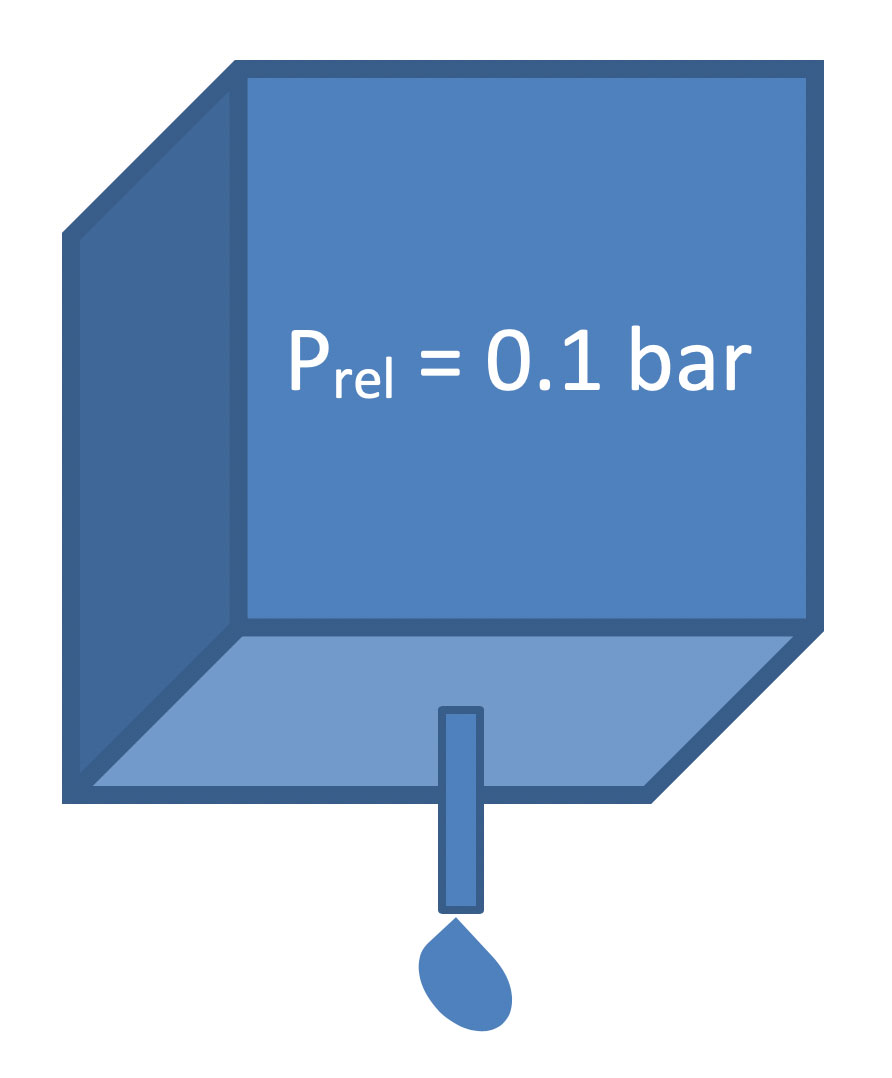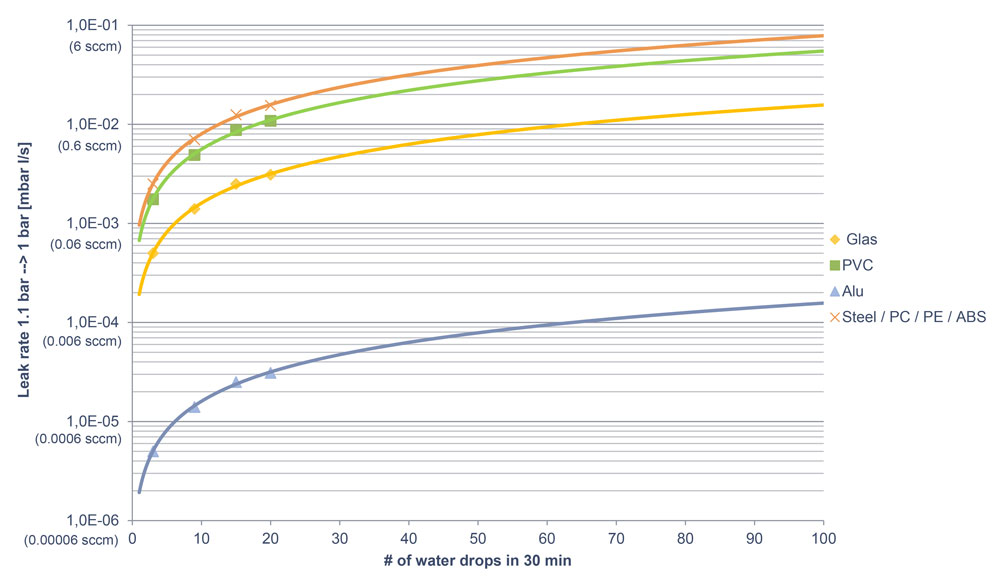Ingress Protection Class IP67 – Tests Prove Leak Rate Specification
Many housings for electrical components like sensor enclosures as well as battery cases for lithium ion drive battery packs are specified as ingress protection class IP67. The second digit – "7"- stands for protection against intake of water. The test specifies that the part to be tested be exposed to water at one meter depth for 30 minutes and to make sure that no water that could damage the electronics inside enters the enclosure.
Many customers struggle with the question of what helium leak rate specification this relates to. INFICON setup an experiment to answer this question.

Testing Setup
A test part was created which can be equipped with artificial leaks of different sizes. The artificial leaks are made from glass capillaries with a defined diameter to represent a distinct leak path size. Capillaries with 10 µm to 40 µm were investigated. The test part was filled with water and pressurized to 100 mbar overpressure (~ 1.1 bar absolute pressure), equivalent to the pressure in 1 m depth. The outlet of the artificial leak was then observed for 30 minutes and the amount of water dripping out was tracked.
Results of water testing
The results of the water testing are summarized in the below table:
Leak path diameter |
Amount of water dripping off in 30 min |
Average time per drop |
|---|---|---|
10 µm |
very small droplet forms, but does not drip off |
n.a. |
20 µm |
One drop forms but does not drip off within 30 min |
Drop may drip off after 40 -50 min depending on temperature and humidity |
25 µm |
3 drops |
8:30 – 9:00 min |
29 µm |
3 – 4 drops |
7:30 – 8:30 min |
40 µm |
20 Drops |
~ 1:30 min |
100 µm |
560 Drops |
~ 3 seconds |
The test proved that the leak path where the force generated by the water pressure trying to push the water through the leak path and the forces that make the water adhere to the surface of the leak path are in equilibrium, is just below 20 µm in diameter.
Conversion to helium leak rate specification
When deriving a leak rate specification from the above testing, two different scenarios need to be distinguished as these use very different pressure settings:
- Overpressure leak testing (1.1 bar → 1 bar)
- Vacuum leak testing (1 bar → 0 bar)
The following graphs describe the correlation between the amount of water going through a potential leak within 30 min and the corresponding gas leak rate. The helium leak rate and the air leak rate differ with the same factor as the ratio between the dynamic viscosity of helium compared to the dynamic viscosity of air. As these differ by only 7%, for the resolution of the above graph these can be considered identical. In both graphs, the yellow lines show the direct conversion of the test results for a leak path made from glass as illustrated in the video. The other lines show the corresponding leak rates for other materials as converted by their material properties.

Leak rates for 100 mbar differential pressure
Many parts that are designed for IP67 also only withstand very limited pressure differences (typically only 100 to 200 mbar) without damaging the part itself or the seals of the part. The above graph shows the leak rates for a pressure difference of 100 mbar. Depending on the amount of water your part can tolerate you can read the allowable maximum gas leak rate to be tested for. If your part geometry is made e.g. from an ABS or steel housing with a polymer seal, you should test your part for leak rates below the 2*10-3 mbar·l/s (~ 0.1 sccm) if you can tolerate a few drops of water (orange / green line). If you want to allow no water leakage at all, you should go for a 1*10-3 mbarl/s (0.06 sccm) leak rate. If your part is made from an aluminum with a polymer seal so that the leak path is an aluminum surface on one side and a polymer surface on the other side, use an intermediate leak rate level between the two materials, i.e. test in the 1*10-4 mbar·l/s range if you can tolerate a few drops of water. Go for a mid 10-5 mbar· l/s range leak rate if you want to be absolutely sure no water can penetrate into the housing.

Leak rates for leak testing at 1 bar differential pressure
Some parts can withstand higher differential pressures. E.g. a cast housing from aluminum may be tested for leaks in a vacuum chamber. The above graphs show the leak rates for different amounts of tolerable water if your part can be tested with one atmosphere pressure difference. If you part is made from steel, you may test for leak rates in the low 1*10-2 mbar l/s (0.6 sccm) range if you can tolerate a few drops of water. If you want to make sure no water can leak through, you need to test for a 5*10-3 mbar·l/s (0.03 sccm) leak rate. If you part is made from aluminum you need to test for much smaller leak rates, though. If you can tolerate a few drops of water, you should test for a ~1*10-4 mbar·l/s leak rate. If you want to make sure no water can penetrate, you need to test for 2*10-5 mbar·l/s leak rate.
Conclusion
Leak testing for ingress protection according to IP67 requires sensitive leak testing methods that can test well below 1 sccm leak rates. Tracer gas leak testing is the method of choice for these applications. Different pressure conditions and different materials yield different leak rate specification. Contact us with your specific needs for testing and we will be happy to help you reach the highest efficiency and reliability of testing!
